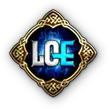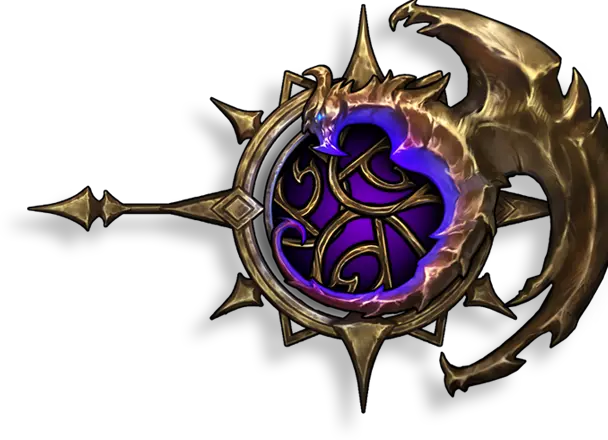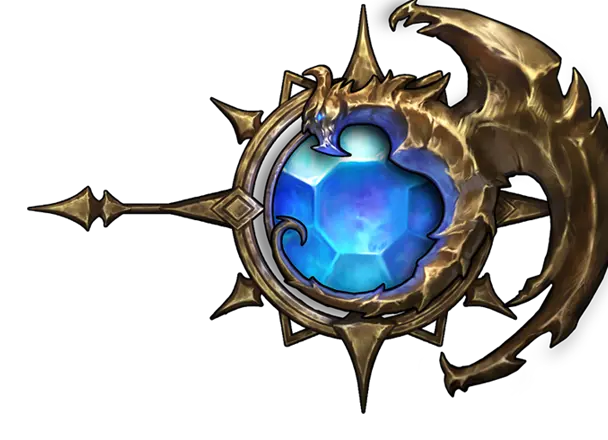Defying the Odds: The Ultimate Card Game for Windows Gamers
Exploring Digital Card Games
In the realm of digital card games, several titles stand out for their unique gameplay mechanics, art direction, and strategic depth. Here, we explore some of the most captivating card games available for Windows gamers.
Magic: The Gathering Arena
Magic: The Gathering Arena is one of the most acclaimed digital versions of the classic card game, Magic: The Gathering. The game offers a wide array of gameplay possibilities and formats, making it appealing to both veteran Magic players and those seeking a more complex challenge than other collectible card games (CCGs) like Hearthstone or Gwent. The game is known for its strategic depth and rich lore, which keeps players engaged.
| Feature | Details |
|---|---|
| Developer | Wizards of the Coast |
| Platforms | Windows, macOS |
| Release Date | September 26, 2019 |
| Formats | Standard, Draft, Sealed, Historic |
Balatro
Balatro is a card game that combines simplicity with complexity as players progress. It borrows elements from Poker, requiring players to construct specific hands from their selection of cards to earn chips and multipliers. The game allows for item combinations to create card synergies, offering high replayability with the ability to start a new run every time you lose.
| Feature | Details |
|---|---|
| Developer | Indie Studio |
| Platforms | Windows |
| Release Date | TBA |
| Gameplay | Hand construction, replayability |
Zet Zillions
Zet Zillions is a deck-building game that merges elements from games like Slay the Spire, FTL, and Helldivers 2. Its unique art direction is inspired by ’80s cartoons and comic books. The game features a population mechanic and a fusion mechanic, offering a mix of style, substance, and replayability.
| Feature | Details |
|---|---|
| Developer | Indie Studio |
| Platforms | Windows |
| Release Date | TBA |
| Mechanics | Deck-building, population management, fusion |
Wildfrost
Wildfrost is a deck-building roguelike game that combines elements of Hearthstone and Slay the Spire. The game features an adorable art style and unique mechanics, such as a dynamic counter system to plan moves and counter enemy attacks. Players can upgrade cards and expand the hub for better starter cards between runs.
| Feature | Details |
|---|---|
| Developer | Indie Studio |
| Platforms | Windows |
| Release Date | TBA |
| Mechanics | Deck-building, roguelike, dynamic counter system |
Marvel Midnight Suns
Marvel Midnight Suns is a blend of card game and strategy game that explores the darker side of the Marvel universe. The game mixes RPG elements with turn-based combat, allowing players to forge friendships with staple Marvel characters and engage in battles against Lilith’s forces. This unique gameplay experience offers a fresh take on both card games and the Marvel franchise.
| Feature | Details |
|---|---|
| Developer | Firaxis Games |
| Platforms | Windows, PlayStation, Xbox |
| Release Date | October 7, 2022 |
| Gameplay | Turn-based combat, RPG elements |
By diving into these digital card games, players can experience a range of strategic, creative, and competitive gameplay that caters to various tastes and preferences.
Unique Features and Gameplay
In this section, we delve into the unique features and gameplay elements that set these digital card games apart from traditional card games. We explore game mechanics, art direction, and replayability and progression.
Game Mechanics
Each card game for Windows offers distinct mechanics that cater to strategic, creative, and analytical players.
Balatro: Inspired by Poker, Balatro allows players to construct specific hands from their selection of cards to earn chips and multipliers. The game becomes more complicated as you progress, with the ability to combine items to create card synergies. This makes for a highly replayable experience where a new run can be started every time you lose.
Zet Zillions: Combining elements from Slay the Spire, FTL, and Helldivers 2, Zet Zillions introduces a population mechanic and a fusion mechanic. The game offers strategic depth and a rollicking adventure with style and substance.
Wildfrost: This deck-building roguelike game combines mechanics from Hearthstone and Slay the Spire. It features a dynamic counter system that allows players to map out moves and counter enemy attacks. Players can upgrade cards and expand the hub for better starter cards between runs.
Marvel Midnight Suns: This game mixes card game mechanics with turn-based combat and RPG elements. Players can forge friendships with Marvel characters and engage in strategic battles against Lilith’s forces, offering a unique blend of strategy and narrative.
Art Direction
Art direction plays a significant role in enhancing the gaming experience, and each game brings its own visual flair.
Balatro: The game’s visuals are straightforward yet engaging, focusing on the clarity of the card designs and the overall user interface.
Zet Zillions: Featuring a unique art direction inspired by ’80s cartoons and comic books, Zet Zillions stands out with its vibrant and nostalgic aesthetics.
Wildfrost: Known for its adorable art style, Wildfrost captures the charm of its characters and environments, making the gameplay visually appealing and immersive (PCGamesN).
Marvel Midnight Suns: The game explores the darker side of the Marvel universe, with detailed character models and environments that bring the iconic comic book style to life (PCGamesN).
Replayability and Progression
Replayability and progression are crucial for keeping players engaged over the long term. Here’s how each game addresses these aspects:
Balatro: With its combination of items and card synergies, Balatro offers high replayability. The ability to start a new run every time you lose ensures that the game remains fresh and challenging.
Zet Zillions: The game’s population and fusion mechanics add layers of complexity and strategy, making each playthrough unique and engaging. Its blend of style and substance keeps players coming back for more (PCGamesN).
Wildfrost: The dynamic counter system and the ability to upgrade cards and expand the hub between runs enhance the game’s replayability. Players are motivated to improve their strategies and progress further in each session (PCGamesN).
Marvel Midnight Suns: The game’s mix of card mechanics, turn-based combat, and RPG elements provides a unique gameplay experience. Forging friendships with Marvel characters and engaging in battles against Lilith’s forces adds depth and replayability.
Here’s a comparison table for quick reference:
| Game | Mechanics | Art Direction | Replayability & Progression |
|---|---|---|---|
| Balatro | Poker-inspired, card synergies | Clear and straightforward | High replayability with new runs |
| Zet Zillions | Population and fusion mechanics | ’80s cartoons and comic books | Unique playthroughs, blend of style/substance |
| Wildfrost | Dynamic counter system, upgrades | Adorable and charming | Dynamic moves, upgrades between runs |
| Marvel Midnight Suns | Card mechanics, turn-based combat | Detailed, darker Marvel universe | Strategic battles, character friendships |
By understanding these unique features and gameplay elements, we can appreciate how these digital card games offer a diverse and engaging experience for Windows gamers.
Comparison with Traditional Card Games
Strategy and Complexity
Digital card games like Magic: The Gathering Arena offer an array of gameplay possibilities and formats that mirror the complexity of their traditional counterparts. The strategic depth in these games often surpasses that of simpler digital card games such as Hearthstone or Gwent (PCGamesN). Players must consider various card lifecycle hooks and triggers, akin to managing objects in enterprise applications (CritPoints). This complexity allows for intricate strategies and combo plays, similar to traditional card games.
| Game | Strategy Complexity | Mechanic Examples |
|---|---|---|
| Magic: The Gathering Arena | High | Lifecycle hooks, triggers, and combos |
| Hearthstone | Medium | Simplified mechanics, fewer triggers |
| Gwent | Medium | Focus on board control and card synergies |
Accessibility and Player Engagement
Digital card games generally offer higher accessibility compared to traditional card games. They eliminate the need for physical cards and spaces, making it easier for players to engage in gameplay anytime and anywhere. Additionally, digital platforms often provide tutorials, automated rule enforcement, and matchmaking systems that enhance player engagement and ease of learning.
| Game Type | Accessibility | Engagement Features |
|---|---|---|
| Digital Card Games | High | Tutorials, automated rules, matchmaking |
| Traditional Card Games | Medium | Requires physical cards, manual rule enforcement |
Multiplayer and Social Aspects
Multiplayer and social aspects are integral to both digital and traditional card games. However, digital card games excel in providing online multiplayer experiences, allowing players to compete with others globally. Features like chat systems, friend lists, and online tournaments enhance the social experience and foster a sense of community.
| Aspect | Digital Card Games | Traditional Card Games |
|---|---|---|
| Multiplayer | Online multiplayer, global matchmaking | In-person multiplayer, local groups |
| Social Features | Chat systems, friend lists, online tournaments | Face-to-face interaction, local tournaments |
In summary, while digital card games offer strategic complexity, high accessibility, and robust multiplayer features, they also maintain the core elements that make traditional card games captivating. By leveraging the advantages of digital platforms, these games provide a dynamic and engaging experience for players.
Development and Design Insights
Multi-Platform Considerations
In the development of digital collectible card games, multi-platform considerations are paramount. Designing for both console and PC platforms can be expensive and inefficient if not approached correctly. As suggested by Game Developer, the “Secretly Console First” approach, exemplified by Overwatch, involves creating designs that cater to console without alienating PC users. This strategy helps streamline development while ensuring an optimal experience across platforms.
Developers must also consider the specific needs of each platform. For instance, input schemes differ significantly between consoles and PCs, necessitating unique designs that enhance usability and accessibility. HDMI becoming standard for monitors and televisions, along with casting technology like Steam Link, has further blurred the lines between PC and console gaming (Game Developer). This shift in player behavior must be considered during the design phase to create a seamless experience across all devices.
| Approach | Example | Platform Focus |
|---|---|---|
| Simple Prompt Switch | Dishonored 2 | Console |
| PC Leaning | Fortnite Battle Royale | PC |
| Secretly Console First | Overwatch | Console without PC bias |
User Interface Design
User Interface (UI) design is a critical aspect of digital card games. The central challenge lies in creating UI and information systems that are appropriate for each platform’s input scheme while being mindful of development resources (Game Developer).
Effective UI design involves several key elements:
- Clarity: Ensuring that all information is easily readable and accessible.
- Intuitiveness: Designing interfaces that are easy to navigate for both new and experienced players.
- Aesthetics: Creating visually appealing designs that enhance the gaming experience.
Real-world examples include the “Simple Prompt Switch” used in Dishonored 2, which adjusts prompts based on the platform, and Fortnite Battle Royale’s “PC Leaning” approach, which tailors the user interface to the PC environment.
Player Behavior and Trends
Understanding player behavior and trends is crucial for the successful development of digital card games. Factors such as the resurgence of 8 and 16-bit influenced indie games, the standardization of HDMI for monitors and televisions, and the rise of casting technology have significantly influenced player preferences and behaviors (Game Developer).
Today’s players expect high levels of accessibility and seamless integration across platforms. As developers, we must be aware of these trends and adapt our designs to meet the evolving needs of our audience. By doing so, we can create engaging and immersive experiences that resonate with Generation Y players, who are strategic, creative, competitive, and analytical.
In conclusion, by considering multi-platform development, focusing on effective UI design, and staying attuned to player behavior and trends, we can create the ultimate card game for Windows gamers that defies the odds and delivers a captivating gaming experience.
Legends of Elysium (LOE) is a FREE-to-play strategy game that combines collectible cards with deep board game mechanics. Conquer a vibrant fantasy realm with diverse races, customizable heroes, and endless strategic possibilities
Created by DA Games, LOE features:
- Stunning visuals that bring Elysium to life ✨
- Competitive multiplayer leagues to test your skills ⚔️
- Engaging battlefield challenges and eSports tournaments
- Play-and-earn systems to monetize your passion
Join the legends today!
[CTA_BUTTON_PLAY]







